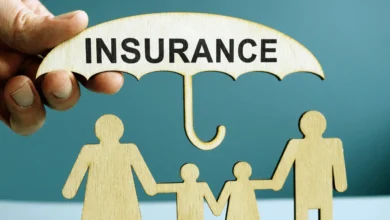Parametric Insurance: What Is It and Who Should Consider It in the USA?

In a world where climate risks, natural disasters, and unexpected disruptions are increasing, many Americans are rethinking their insurance strategies. Enter parametric insurance—a modern and innovative form of coverage that pays out based on predefined event triggers, not on damage assessments.
But what exactly is parametric insurance? How does it differ from traditional coverage? And who in the USA should consider it?
This article will explore:
- What parametric insurance is
- How it works
- Its advantages and limitations
- Who should consider it in the U.S.
- Real-world examples
- Where to find parametric insurance providers
Let’s dive in.
💡 What Is Parametric Insurance?
Parametric insurance is a type of insurance that pays out when a specific event meets or exceeds a predefined threshold, such as wind speed, rainfall, or earthquake magnitude. Unlike traditional insurance, it doesn’t require damage verification or claim adjusters.
✅ Key Features:
- Quick payout based on third-party data
- No need to prove actual loss or damage
- Trigger-based model (e.g., “If wind speed > 120 mph, then payout = $100,000”)
🔗 According to Swiss Re, parametric insurance fills a critical gap for climate resilience and rapid recovery.
⚙️ How Does Parametric Insurance Work?
Instead of assessing damage after a loss, parametric insurance relies on objective data from trusted sources (e.g., NOAA, USGS, or NASA). Here’s how it works:
- You choose an event trigger – like a hurricane of Category 4 or a 7.0 magnitude earthquake.
- A payout amount is pre-agreed – based on risk modeling.
- If the trigger is met, the payout is automatically sent—no paperwork or claim disputes.
This makes parametric insurance ideal for high-frequency or catastrophic risks that are hard to price or settle quickly.
📉 Why Traditional Insurance Often Falls Short
Traditional insurance can be slow, subjective, and reactive. After a disaster:
- You file a claim
- An adjuster inspects the damage
- You may wait weeks—or months—for reimbursement
This can be devastating for:
- Small businesses
- Farmers
- Homeowners in disaster-prone areas
- Governments and municipalities
A report by the World Bank highlights how parametric insurance reduces post-disaster financing gaps in both developed and emerging economies.
📌 Who Should Consider Parametric Insurance in the USA?
Parametric insurance is not just for governments or corporations—it’s becoming a smart option for individuals and small businesses, especially in the following sectors:
1. Farmers and Agribusinesses
- Drought, hail, and crop failures are often unpredictable.
- Parametric insurance helps with immediate cash flow to continue operations.
2. Homeowners in High-Risk Areas
- Live in a hurricane zone (Florida) or wildfire region (California)?
- Parametric policies provide fast financial relief after catastrophic events.
3. Travel and Event Companies
- Insure against weather-related cancellations (rainfall, windstorms).
- Get payouts if weather thresholds are exceeded.
4. Municipalities and Local Governments
- Many cities use parametric insurance to fund disaster response after earthquakes or floods.
5. Small Business Owners
- Quick recovery cash can make a huge difference for small businesses disrupted by natural disasters or supply chain delays.
📊 Benefits of Parametric Insurance
✅ Fast Payouts
You receive funds within days, not weeks or months.
✅ Transparent Triggers
No disputes over the validity of your claim. The payout is triggered by objective, public data.
✅ Customizable Coverage
Policies can be tailored to specific events, thresholds, and amounts.
✅ Complements Traditional Insurance
Use it as a supplement for faster recovery while your standard policy is processed.
⚠️ Limitations to Consider
While parametric insurance is powerful, it’s not perfect:
- No exact loss matching: You get paid based on the event trigger, even if your loss is more or less.
- Basis risk: The payout may not always reflect actual damage. For example, a hurricane might hit your area but spare your property—and you still get paid.
- Not widely available for individuals yet, but this is changing as climate risks increase.
📍 Examples of Parametric Insurance in the USA
💨 Hurricane Insurance in Florida
Some private insurers offer parametric hurricane policies that pay out based on:
- Wind speed
- Storm surge height
- Hurricane category at landfall
Example: If wind speed at your ZIP code exceeds 120 mph, you receive a fixed payout.
🔥 Wildfire Parametric Policies in California
Payouts triggered by:
- Fire proximity to insured location
- Satellite-confirmed fire activity
- Air quality index (AQI) thresholds exceeded
🚜 Agriculture Parametric Insurance
Used by farmers in states like Kansas, Iowa, and Nebraska. Trigger events include:
- Low rainfall (drought)
- Soil moisture levels
- Excessive heat days
📦 Where Can You Buy Parametric Insurance?
Parametric insurance is offered by specialized carriers and brokers. Not all traditional insurers provide it (yet), but the following companies are leading the way:
- Swiss Re
- AXA Climate
- Jumpstart Recovery – offers earthquake parametric insurance in California
- Arbol – climate risk coverage for agriculture
- Global Parametrics
You can also consult your broker for custom coverage options or work with InsurTech platforms offering embedded solutions.
📈 The Growing Demand for Parametric Insurance in the USA
As climate change increases the frequency of natural disasters, the U.S. insurance industry is under pressure to evolve.
Parametric insurance is gaining momentum because:
- It offers predictable recovery timelines
- Reduces the burden on public disaster aid
- Bridges the gap between event and economic impact
According to McKinsey & Company, parametric insurance will play a key role in climate adaptation and financial resilience in the coming decade.
✅ Key Takeaways
- Parametric insurance is based on event triggers, not traditional claims processes.
- It provides faster payouts, less paperwork, and more transparency.
- Ideal for farmers, small businesses, homeowners, and governments in high-risk areas.
- Climate change is making it more relevant than ever in the U.S.
- It complements, not replaces, traditional insurance policies.
🔗 Useful Outbound Links
- Swiss Re – Parametric Solutions
- Jumpstart Recovery – Earthquake Insurance
- World Bank on Parametric Insurance
- McKinsey – Climate Resilience and Parametric Models
🧠 Final Thoughts
Parametric insurance offers a smarter, faster, and more transparent way to recover from devastating events. As climate risks continue to rise, it’s time to rethink how we insure our lives, homes, and businesses. Whether you’re a farmer in Nebraska or a homeowner in California, parametric insurance could be the financial buffer you never knew you needed.




